Even the most brilliant marketing strategies have an expiry date. Market conditions shift, customer preferences evolve, and competitors adapt. What worked brilliantly six months ago might be losing effectiveness today, yet many business owners continue investing in diminishing returns because they haven’t stopped to reassess.
Regular pressure testing isn’t just good practice, it’s essential for maintaining growth momentum. Think of it as preventative maintenance for your business engine. Catching small issues before they become major problems can save you thousands in wasted marketing spend and countless hours pursuing the wrong direction.
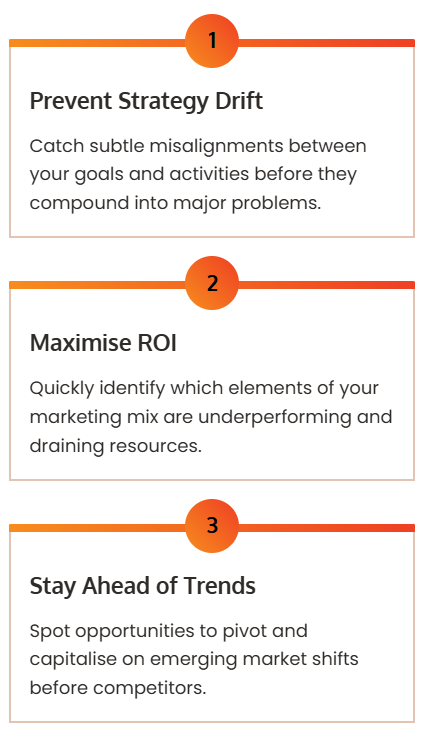

Our pressure test is built around four fundamental pillars that determine whether your marketing strategy is firing on all cylinders. Each dimension requires honest assessment. The kind that sometimes makes business owners squirm, but ultimately delivers the insights needed for breakthrough growth.
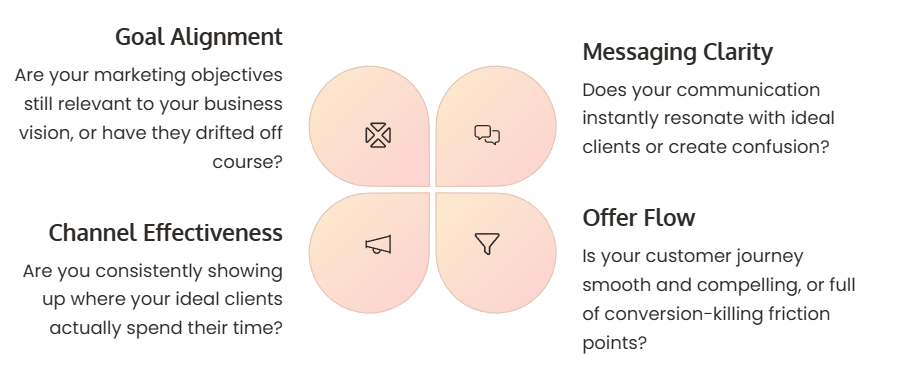

Your marketing goals should be directly connected to your broader business objectives. This first section of the pressure test helps you determine whether your current targets are still driving you toward meaningful outcomes or if they’ve become disconnected from what truly matters.
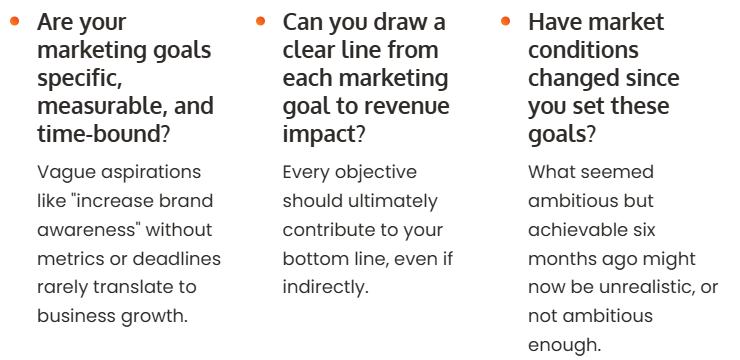

Brilliant service businesses often struggle to communicate their value clearly. Your expertise is so close to you that articulating it simply becomes surprisingly difficult. This section helps you determine whether your messaging passes the “instant clarity” test essential for converting prospects.
The greatest risk for service providers isn’t being rejected, it’s being misunderstood or, worse, forgotten entirely. Your messaging needs to create an immediate “that’s exactly what I need” reaction, rather than a polite nod followed by confusion.
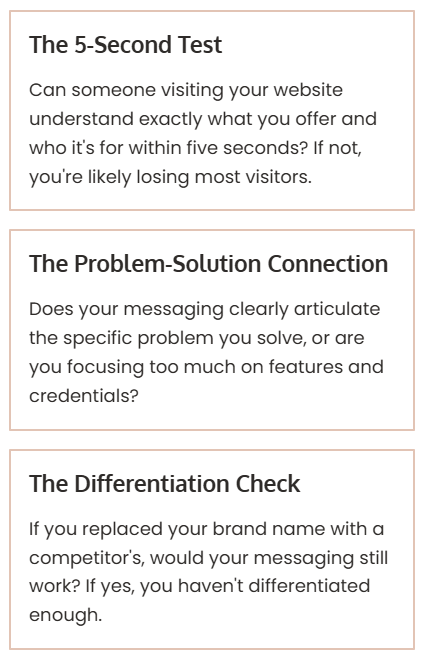

Even with compelling messaging, your marketing can still fail if prospects don’t have a clear, logical path to becoming clients. This dimension examines whether your offer structure creates a smooth journey or puts unnecessary obstacles in the way of conversion.


Showing up consistently in the right places is often more important than having perfect messaging. This dimension helps you determine whether you’re investing your limited time and resources in channels that actually reach your ideal clients.


After completing the pressure test, you’ll need to honestly assess whether your marketing strategy needs minor adjustments or a more comprehensive overhaul. This isn’t about judgement, it’s about clarity and forward momentum.
Most businesses fall somewhere on a spectrum rather than into a binary “working/not working” category. The key is identifying which elements require immediate attention versus which are performing adequately for now.

Knowledge without action is merely trivia. Once you’ve completed your marketing strategy pressure test, it’s essential to translate your insights into a concrete action plan with clear priorities and timelines.
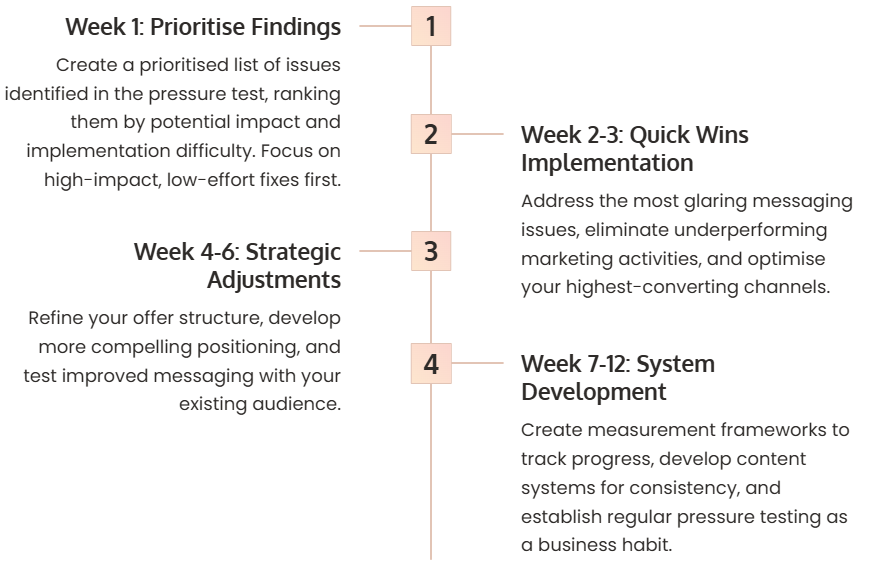

The Quick-Start Marketing Strategy Pressure Test is a powerful first step toward greater marketing clarity and effectiveness. Taking just 10 minutes to complete, it provides the strategic insight that many service businesses spend months trying to discover through trial and error.
This isn’t about marketing theory. It’s about practical assessment leading to measurable results. Service businesses that regularly pressure test their marketing typically see:
- Higher conversion rates from the same marketing activities
- Reduced wasted spend on ineffective channels
- Clearer decision-making about marketing investments
- More consistent lead generation and client acquisition

